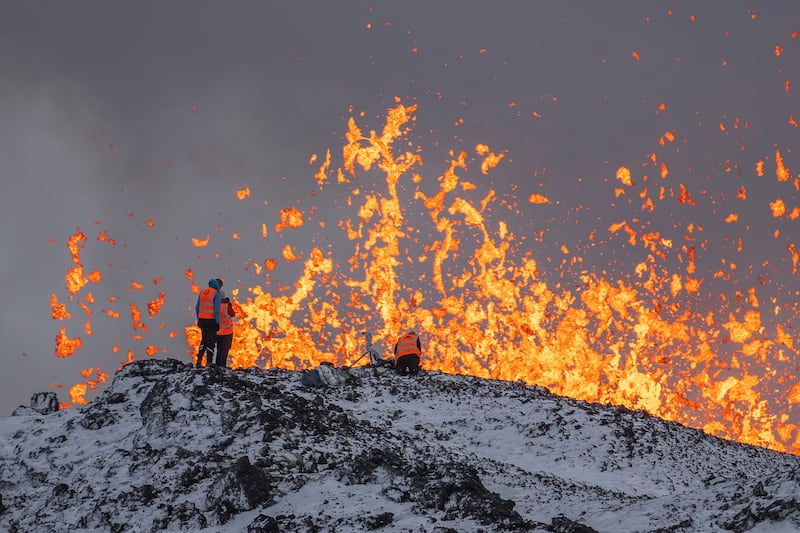Lava flows from a volcano that erupted this week in Iceland have eased further, and no volcanic activity is now visible, scientists said after flying over the area early on Thursday.
After weeks of raised seismic activity on the Reykjanes peninsula in southwest Iceland, the eruption spewed lava and smoke more than 100m into the air on Monday.
The intensity of lava flows has steadily decreased since Monday, easing worries of a repeat of the international travel chaos caused by ash from another volcanic eruption on the island in 2010.

The Icelandic Metrological Office said in a statement on Thursday that lava flows seemed to have diminished overnight, but that it was too early to declare the eruption over.
READ MORE
"Scientists flying over the volcanic areas confirm that no volcanic activity is visible, and it appears to have extinguished in the craters, but glow is still visible in the lava field," it said.
“The eruption is reduced compared to the beginning, and it’s just slowly dying down,” Armann Hoskuldsson, research professor at the Institute of Earth Sciences at the University of Iceland told Reuters. “It will last for a few days more and then it’s finished.”
Monday’s eruption opened a 4km fissure about 3km north of the fishing town of Grindavik.
The nearly 4,000 inhabitants of Grindavik, who were evacuated in early November, will be allowed back into the town briefly on Thursday, authorities said.














